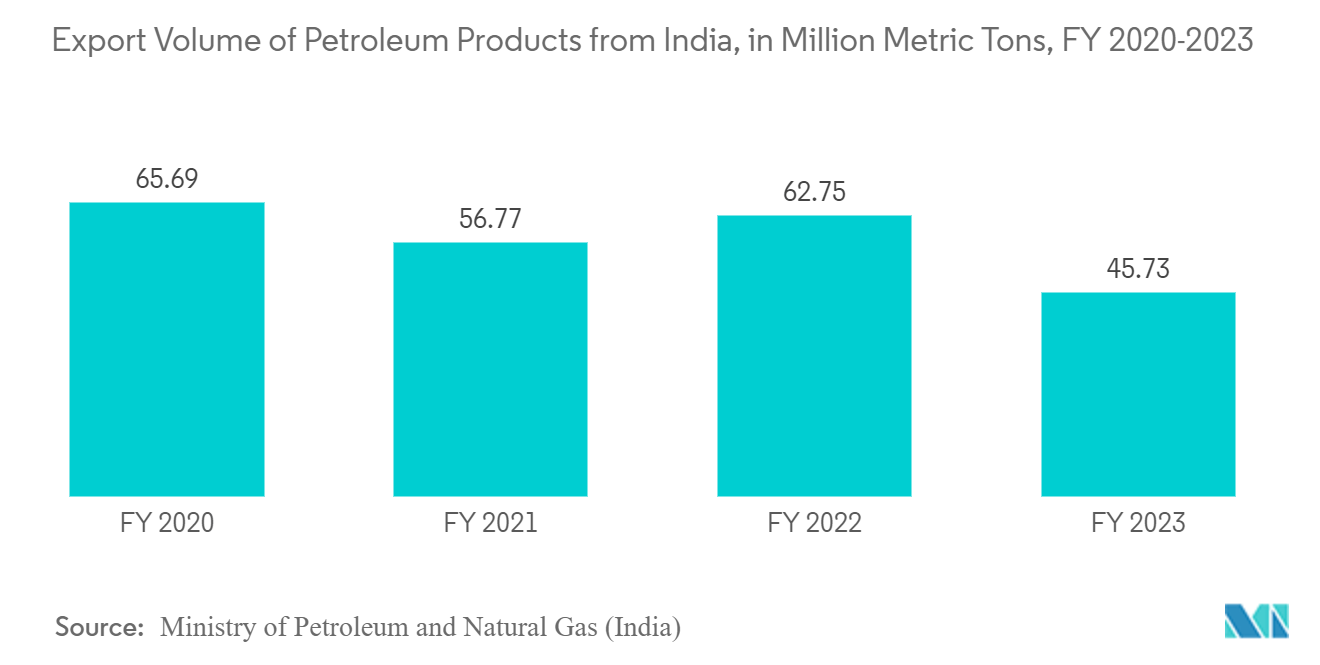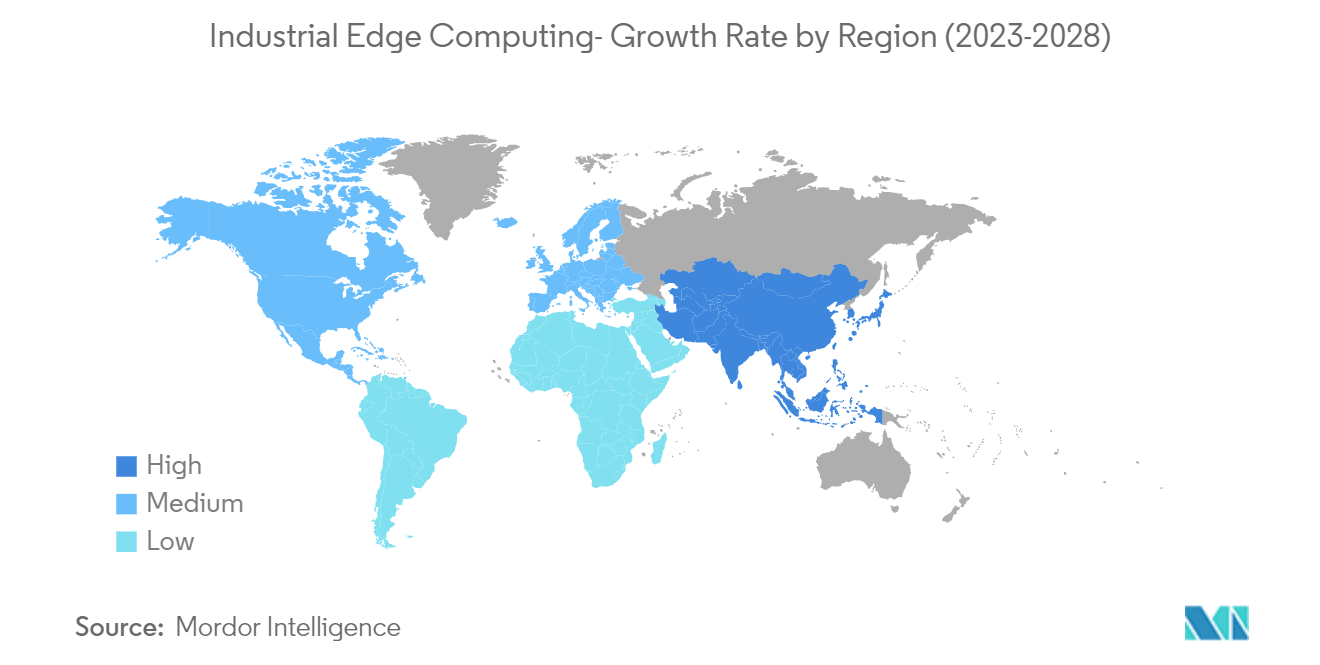Market Trends of Industrial Edge Computing Industry
Oil and Gas sector is expected to grow at a higher pace
- The current uncertainty around the global market for oil and natural gas has boosted the highly competitive nature of the oil and gas industry. This has pressured companies to reduce their operating costs and capital expenditures. Also, the industry is transforming digitally due to the rise of technologies such as edge computing and the Internet of Things (IoT).
- The industry needs to catch up to other sectors, such as manufacturing when it comes to digitalization and automation, so the potential for IoT to be transformative remains to be explored. Companies must leverage this change to increase their productivity and cut costs, enabling them to stay competitive in today's market.
- As oil and gas prices remain volatile, companies are looking to companies like ZEDEDA, the leader in edge infrastructure orchestration, to leverage the power of data and increased mechanization to optimize processes and gain a competitive edge. Pulling convenient actionable insights from edge conditions like oil rigs, wells, and refineries can save millions by reducing equipment failure and safety issues and maintaining regulatory compliance. These conditions, however, can be very remote and may have limited on-site staff, so managing these challenges requires tools designed to simplify handling and securing edge infrastructure.
- Edge computing introduces cost savings by lowering the network bandwidth and reducing data center costs. Minimizing unplanned downtime through edge computing can also lead to significant payoffs. An MIT Sloan study found that a single day of downtime for a liquefied natural gas (LNG) facility can cost USD 25 million, with a typical midsize LNG facility going down about five times a year. Edge computing prevents costly shutdowns by reducing the processing burden on IT infrastructure.
- Offshore oil and gas structures produce an extraordinary amount of data daily. According to a Cisco report, an oil rig can create two terabytes of data daily. Still, due to the remote area of the offshore oil and gas industry, this data is only examined and leveraged for decision-making with support from edge computing resolutions.
- A recent blog from Schneider Electric underscores the significance of latency reduction as a compelling factor driving offshore organizations to adopt edge platforms. Zero-touch edge computing facilitates real-time data organization, enhancing communication, storage, and analysis capabilities. This, in turn, contributes to more informed and timely business-critical decision-making.

Asia- Pacific is anticipated to hold the significant share
- Asia's top emerging markets encompass India, China, the Philippines, Indonesia, and Vietnam. Additionally, countries like Malaysia, Singapore, and Thailand are attracting significant attention. These economies are undergoing substantial growth in their consumer classes, rapid technological adoption, and digital transformation. For instance, the Philippines is experiencing a 30% annual growth in its Internet economy through 2025. India is projected to have 1 billion smartphone users by 2026, and Google predicts that Vietnam will be one of the fastest-growing Internet economies in the next decade.
- However, as more individuals across Asia's emerging markets simultaneously connect and access digital services, there is a growing strain on local networks. Public internet congestion has become a top concern for companies in emerging Asia, resulting in issues such as latency and jitter, which can adversely affect user experiences. In an era where consumers increasingly expect reliable and fast digital services anytime, anywhere, businesses failing to meet these expectations risk impacting their bottom line.
- Furthermore, increased government funding to enhance digitization and the growing demand for businesses to process and store data contribute to market growth. The rise of emerging IoT applications in smart cities generates vast amounts of data. The increasing need for cost-effective data analysis and processing near the data source has led to the adoption of cloud computing, driving segment growth.
- The development of multi-cloud platforms in Asia has spurred the growth of a high-skilled workforce in computer engineering. Businesses focused on digital tools and techniques, as well as technology-based collaboration between countries like Singapore and India in areas such as digital health, smart cities, and IT-based infrastructure, are examples of how edge computing is gaining traction in Asian enterprises. By using edge computing platforms, Asian organizations can alleviate infrastructure bottlenecks caused by the surge in consumers. Notably, Singapore's multi-cloud platform serves as a benchmark for its benefits to business organizations.
- For instance, in September 2022, Bharti Airtel and IBM partnered to deploy Airtel's edge computing platform. This initiative enables large enterprises across various industries, including automotive and manufacturing, to accelerate innovative solutions. Maruti Suzuki, India's largest carmaker, plans to use the edge platform to enhance efficiency and accuracy in quality inspections on the factory floor. By establishing this platform, Maruti Suzuki expects to improve quality control and ensure data security at the edge.
- Nife, as an organization, assists enterprises in building future business models that offer robust digital experiences with an added layer of security. Models based on edge computing platforms are rapidly scalable and possess a global scaling factor, which can result in cost savings when expanding into new offshore markets. These factors are significantly benefiting local edge computing enterprises, allowing them to compete effectively in multi-cloud services on a global scale.
- In response to increasing demand, companies often implement automation strategies to maintain high efficiency in their production environments. Consequently, compared to all three oil and gas streams, automation penetration is relatively high in the downstream sector.


